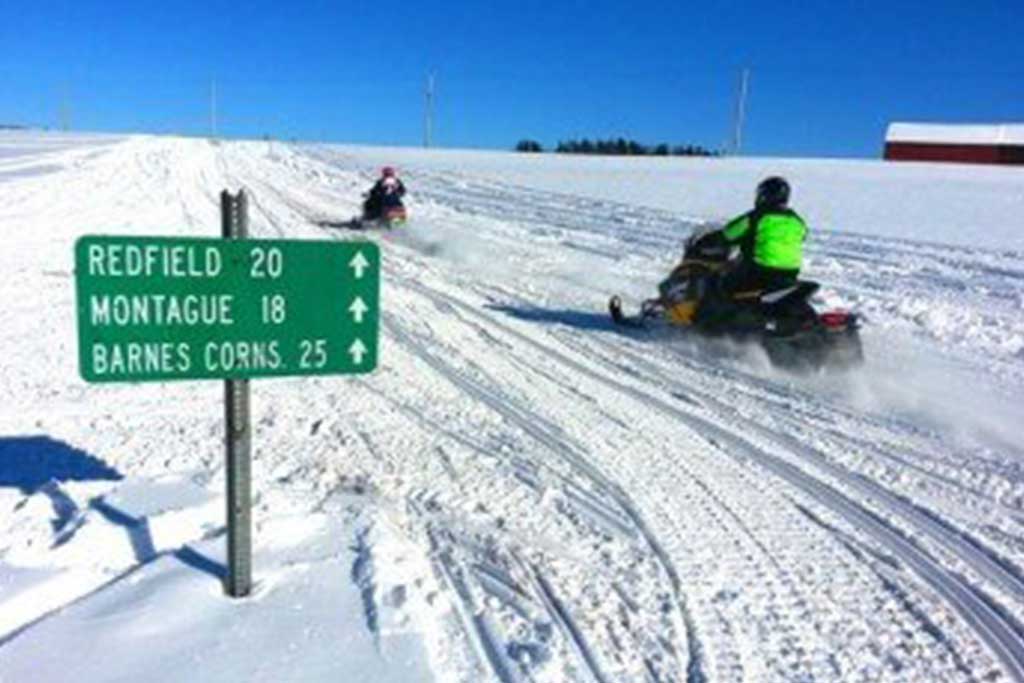Snowmobiling has inherent risks you need to know to be prepared and mitigate those risks as much as possible. Learn more at Stanley Law Offices.
Did you know?
Each year, more people are injured while snowmobiling than in any other recreational winter sport. To safely drive a snowmobile, you need to be strong, skilled and mature. That’s why children younger than 16 years of age should not operate snowmobiles without adequate training and supervision. It also takes strength and stamina to be a passenger. You need to be able to hold on tight for a long period of time, often while the snowmobile goes over bumpy ground at a high speed. Children younger than six years old should never ride as passengers on a snowmobile.
Head injuries are the leading cause of death and serious injury on snowmobiles. These injuries usually happen when snowmobilers crash, fall or overturn while moving. Often snowmobiling injuries are speed and/or alcohol related. As a parent, it sounds like fun and games out in the snow, but children can also be injured if they’re towed by a snowmobile while they’re on a sled, tube, tire or other devices that are pulled.
Personal injury cases involving snowmobiles can be difficult depending on the circumstances. All facts need to be investigated thoroughly just like any other serious auto, truck, or construction accident.
Here at Stanley Law we see serious personal injury resulting from a snowmobile accident that was due to a malfunction of the machine itself, not driver error. The liability then falls to the manufacturer of the machine involved in the snowmobile accident and we would do our due diligence to demonstrate a reliable and winnable case.
If you’re prepared to face the risks inherent in snowmobiling, at least take the following precautions and know before you go:
- Be careful when fueling the snowmobile to avoid burns.
- Take care when loading snowmobiles on and off trailers to prevent strains and crush injuries.
- Check the weather forecast before you go out.
- Check the condition of the trails and know your trails.
- Avoid snowmobiling on ice if you’re not sure how thick it is or what condition it is in.
- It’s helpful to know the signs of hypothermia (occurs when body temperature drops to dangerously low levels) and what to do if it happens. Check regularly for frostbite.
- Going off trail requires extreme caution.
Have the right equipment
- Wear well-insulated protective clothing including goggles, waterproof snowmobile suits and gloves, and rubber-bottomed boots.
- All drivers and passengers should wear helmets approved for snowmobiles (such as a helmet meeting the Department of Transportation/Federal Motor Vehicle Safety Standards, American National Standards Institute motorcycle helmet standards – not a bicycle helmet).
- Snowmobiles should have brightly colored antenna flags mounted on rods that are 1.2 m to 2.4 m long located on the back of the snowmobile. This is especially important if you’re driving in a hilly area so that others can see you.
- Carry a first-aid kit, an emergency tool kit (with spark plugs, and drive and fan belts), an extra key, and a survival kit that includes flares. Carry a cellular phone if you’re in an area with service.
Drive Safely
- Beginners should stick to groomed trails only and drive during the day.
- Travel at safe speeds, especially on unfamiliar or rugged terrain where you might run into hazards you can’t see, such as barbed wire.
- Keep the headlights and tail lights on at all times to improve the visibility of your snowmobile to other vehicle operators.
- Travel in groups of two or more, and only on designated, marked trails away from roads, waterways, railroads and pedestrian traffic.
- Do not carry more than one passenger.
- Don’t pull people on saucers, tubes, tires, sleds or skis behind a snowmobile. If you must tow someone, the safest way is to use a sled or cutter attached to the snowmobile by a rigid bar connection. Travel at a slow speed over level terrain away from trees, rocks and other vehicles. A spotter should watch the individual(s) being towed.
- Never drink alcohol or use drugs before or while you’re operating a snowmobile.
Resource
Joe Stanley of Stanley Law and his entire team have decades of experience in serious personal injury cases including snowmobile accidents and have been working on behalf of clients across New York and Pennsylvania to help them get what they deserve. A serious personal injury is not a situation where you want to go it alone on. If you or someone you love has been seriously injured in a car or truck accident, please call us at 1-800-608-3333 or email us through our website where you can also describe your potential case. Your consultation is FREE.

